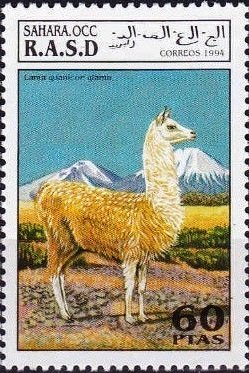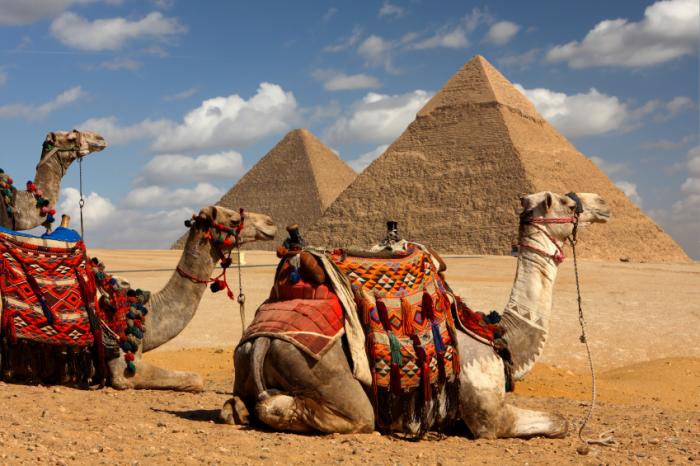Stamp: Lama guanicoe glama (Western Sahara - Vignettes 1994)
Lama guanicoe glama (Western Sahara - Vignettes 1994)
01 January (Western Sahara - Vignettes ) within release Llamas and camels goes into circulation Stamp Lama guanicoe glama face value 60 Sahrawi peseta
| Stamp Lama guanicoe glama in catalogues | |
|---|---|
| Colnect codes: | Col:EH 1994028 |
Stamp is vertical format.
Also in the issue Llamas and camels:
- Stamp - Lama guanicoe face value 28;
- Stamp - Lama guanicoe pacos face value 29;
- Stamp - Vicuña (Vicugna vicugna) face value 40;
- Stamp - Lama guanicoe glama face value 60;
- Stamp - Dromedary (Camelus dromedarius) face value 105;
- Stamp - Bactrian Camel (Camelus ferus bactrianus) face value 135;
Stamp Lama guanicoe glama it reflects the thematic directions:
A camel (from Latin: camelus and Greek: κάμηλος (kamēlos) from Ancient Semitic: gāmāl) is an even-toed ungulate in the genus Camelus that bears distinctive fatty deposits known as "humps" on its back. Camels have long been domesticated and, as livestock, they provide food (camel milk and meat) and textiles (fiber and felt from camel hair). Camels are working animals especially suited to their desert habitat and are a vital means of transport for passengers and cargo. There are three surviving species of camel. The one-humped dromedary makes up 94% of the world's camel population, and the two-humped Bactrian camel makes up 6%. The wild Bactrian camel is a separate species and is now critically endangered.
Animals are multicellular, eukaryotic organisms of the kingdom Animalia (also called Metazoa). All animals are motile, meaning they can move spontaneously and independently, at some point in their lives. Their body plan eventually becomes fixed as they develop, although some undergo a process of metamorphosis later on in their lives. All animals are heterotrophs: they must ingest other organisms or their products for sustenance.


